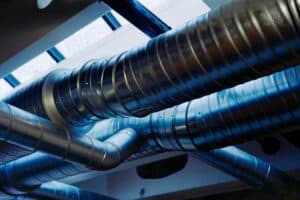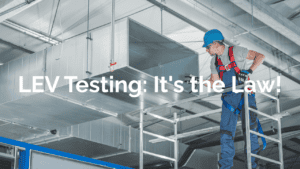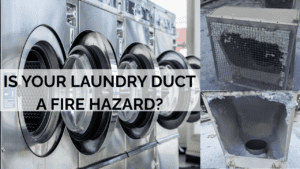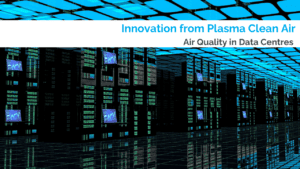Indoor air quality (IAQ) is a crucial element of building design, particularly in hospital HVAC systems, commercial offices, education and public spaces. Poor IAQ can lead to health problems, reduced productivity, and regulatory non-compliance. To maintain high standards, ongoing maintenance of filtration equipment and ventilation systems is essential.
Why Maintenance is Essential for IAQ
Well-maintained air filtration and ventilation systems ensure the removal of pollutants, particulate matter, microbial infection and harmful gases. Without regular upkeep, passive filters become clogged, reducing system efficiency and allowing contaminants to circulate freely. This leads to a decline in air quality and increases the risk of equipment breakdown, potentially leading to expensive repairs or even health risks for building occupants.
Proper maintenance also ensures compliance with health and safety regulations, including TR19 standards, which set the benchmark for the cleanliness and efficiency of HVAC systems.
Key IAQ Maintenance Options
Scheduled Filter Replacements
Filters in HVAC systems need regular inspection and replacement to ensure optimal air quality. High-efficiency particulate air (HEPA) filters, carbon filters, UV air purification and electrostatic filters all require varying frequencies of maintenance, depending on building usage and environmental factors. A maintenance schedule should be tailored to the building’s specific needs, ensuring timely replacement before airflow becomes obstructed.
Duct Cleaning and Sanitisation
Over time, dust, mould, and other contaminants accumulate in air ducts. Regular duct cleaning prevents the buildup of debris, improving airflow and reducing the risk of mould growth or pollutant recirculation. Specialized sanitization and infection control treatments can also be applied to ensure that bacteria and viruses are eliminated, offering enhanced protection to occupants. Technological solutions such as UVC and Needlepoint Bipolar Ionisation (NPBI) can be used on an ongoing basis for air and surface treatment in Air Handling Units of HVAC systems or as standalone air purifiers in their own right.
Fan and Motor Maintenance
HVAC systems rely on fans and motors to circulate air. Any wear and tear can reduce airflow efficiency and strain the system. Regular checks and lubrication of these components will help prevent failures, reduce energy consumption, and prolong the system’s lifespan.
Air Quality Monitoring Systems
Investing in air quality monitors allows building services managers to continuously track indoor pollution control and IAQ levels. Click here to see our blog on IAQ and IEQ assessment. These systems provide real-time data on factors like CO2 levels, humidity, and particulate matter, alerting staff when thresholds are breached. Maintenance teams can then intervene swiftly, maintaining air filtration systems or cleaning ducts as needed to maintain healthy IAQ levels.
System Balancing and Calibration
Balancing the air distribution throughout a building is crucial for maintaining consistent IAQ. Over time, the system may become unbalanced, leading to areas with poor airflow or stagnant air. Periodic recalibration ensures that fresh air is distributed evenly and contaminants are efficiently removed.
Boosting energy efficiency in your existing HVAC system
HVAC duct sealing is a minimally invasive, efficient alternative to sealing by hand and is used to seals leaks internally, reducing labour and access costs. Achieving airtight ductwork improves HVAC performance, energy efficiency, and IAQ, offering significant time and cost savings while ensuring optimal system operation with up to 0% leakage.
Conclusion
Maintaining optimal IAQ to manage indoor air pollution control requires a proactive and tailored approach to system maintenance. By scheduling regular filter replacements, duct cleaning, and component checks, building services professionals can ensure that HVAC systems operate efficiently and that occupants enjoy clean, healthy air. Investing in ongoing maintenance not only extends the lifespan of equipment but also minimizes operational costs and maximizes occupant well-being.
Indoor Air Quality Solutions From Plasma-Cleanair
Plasma-Cleanair offer a comprehensive range of products designed to improve IAQ and enhance ventilation in all types of commercial properties. Our systems are engineered to meet the specific needs of various environments, ensuring that your building remains healthy, comfortable, and compliant with safety regulations.
For more detailed information on Indoor Air Quality and how to maintain IAQ standards, contact us today.








